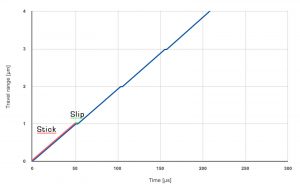Piezo Motor Drives
There are two main Piezo Motor Drives we offer based on Piezo technology.
- Piezo Inertia Drives – High resolution, compact and cost-effective
- Ultrasonic Piezo Motors – Fast precision positioning, self-locking drive, compact and optional optical encoders for very high accuracy
Piezoelectric Inertia – Operating Principle
- Found in linear positioning stages (widths of 21 mm), rotational stages (diameters of 14 mm) and also 6-axis parallel kinematic/Hexapod
- Self-locking at rest with no heat generation
- Nonmagnetic and vacuum-compatible operating principle
- Optional integrated encoder with a resolution of 1 nm (10 nrad)
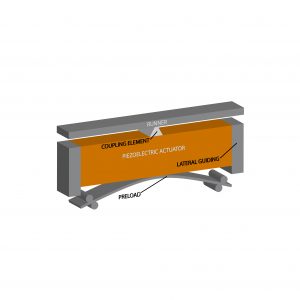
There are two main Piezo Motor Drives we offer based on Piezo technology.
- Piezo Inertia Drives – High resolution, compact and cost-effective
- Ultrasonic Piezo Motors – Fast precision positioning, self-locking drive, compact and optional optical encoders for very high accuracy

Piezoelectric Inertia – Operating Principle
- Found in linear positioning stages (widths of 21 mm), rotational stages (diameters of 14 mm) and also 6-axis parallel kinematic/Hexapod
- Self-locking at rest with no heat generation
- Nonmagnetic and vacuum-compatible operating principle
- Optional integrated encoder with a resolution of 1 nm (10 nrad)
Piezo Inertia drives offer a relatively high holding force with virtually unlimited travel range. They utilize the stick-slip effect (inertia effect) which continuously feeds the runner. The operating frequency of more than 20 kHz enables the runner to be driven at velocities in excess of 5 mm/s.
A Piezo Inertia drive uses a single piezoelectrical actuator controlled by a modified sawtooth voltage that is generated by the electronics of the drive. The actuator expands slowly which moves the runner. Due to its inertia, the runner is unable to follow the fast contraction of the actuator and hence, remains at its position.
Tangential Drive
The drive element is mounted on the side of the runner which can create either a linear or rotary motion. Further, this also enables the stage to have a compact design. Linear and rotation stages are possible with a width of just over 20 mm and a height of only 10 mm, in conjunction with suitable incremental encoders. If you opt for open-loop operation without sensors, this will allow for an even smaller stage.
Shift Drive
The Shift Drive (or rod drive) has a compact design and based on the principle of the runner feeding through a hole in the actuator which provides a large coupling surface between the piezoceramic actuator and runner. This results in a relatively high holding force of up to 10 N.
PiezoMike Drive
PiezoMike actuators expansion have a rotary motion of a claw, as in comparison to direct drives. As the claw clamps onto the fine-thread screw, the resulting motion enables the screw to turn. Due to the thread reduction it is possible to generate high holding forces up to >100 N at feed forces of >22 N.
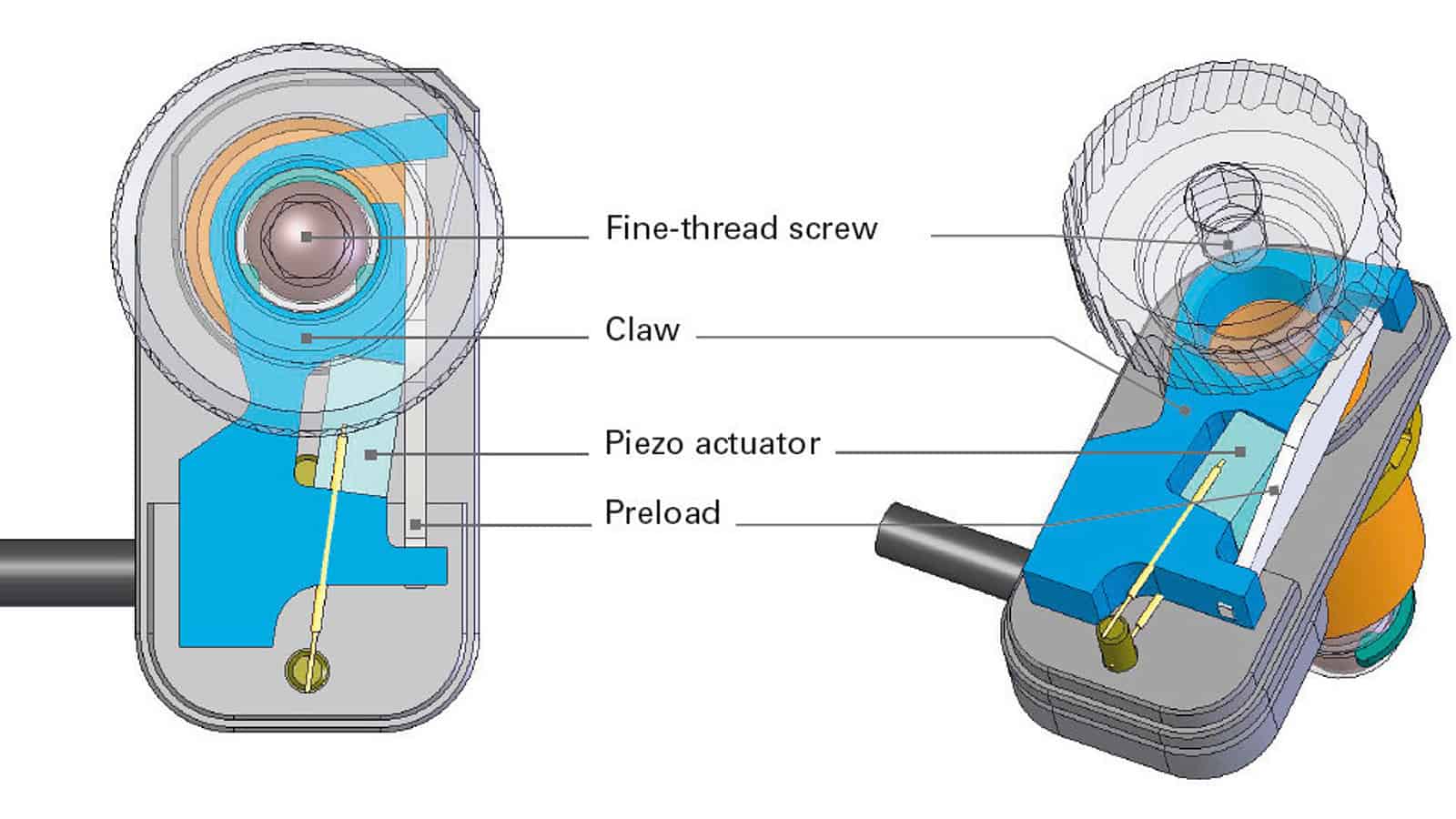
Piezo Inertia Characteristics
Silent and Energy-Saving
The inertia drives works silently at its maximum operating frequency of 20 kHz. The drive has a self-locking mechanism when at rest and holds the position with maximum force. Furthermore, there is no current required and heat is not generated either. Therefore, it is particularly suitable for battery-operated, mobile applications where low load cycle values are needed. Depending on the drive type the piezo voltage also varies with under 48V for tangential drives and up to 100 V for rod drives.
Ultrasonic Piezomotors – Operating Principle
- Offers both linear and rotary motion
- In principle unlimited travel ranges
- Easy mechanical integration
- Holding force up to 15 N, holding torque up to 0.3 Nm
- Velocity to 500 mm/s and resolution up to 2 nm
In general, motor-spindle combinations convert the rotary motion of the motor into linear motion causing a delay in response time, due to the backlash between the mechanical components. We are however able to offer solutions that generate linear motion directly, with greater stability and less inertia, with the PILine®.
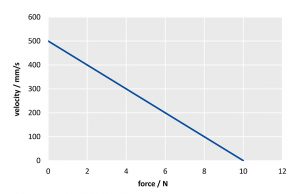
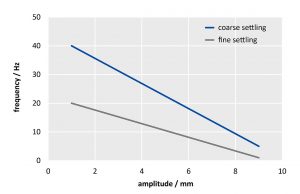
These drives dispense with the mechanical complexity of classical rotary motor/gear/spindle combinations that benefits reliability and can be very susceptible to wear, especially in miniaturized systems.
The central part is a piezo actuator which via a coupling element is pre-tensioned against a movably guided runner. The piezoceramic actuator is exposed to ultrasonic vibrations with a high-frequency AC voltage between 100 and 200 kHz. Relative to the runner, it has a periodic diagonal motion of the coupling element during the actuators deformation. These piezo motor drives are able to achieve motion of a few nanometers per cycle, and high frequencies lead to high velocities.
Nanometer resolution
When the runner of the inertia drive moves, it behaves in the same way as a classical piezoceramic actuator during the slow control phase (stick phase). By varying the applied voltage, the actuator can take any position and will achieve the high motion resolution that is characteristical for piezo ceramics.
A combination with an incremental encoder for measuring the position, one is able to achieve high positioning accuracy and repeatability over long travel ranges.
Piezo Motor Features
The piezo motor drive has a self-locking mechanism when at rest and powered down. This is due to the fact that the piezoceramic actuator is preloaded against the runner. As a benefit, in no power consumption, no heat generation and is ultimately able to keep its position mechanically stable. Applications with a low duty cycle that operates with a battery or is heat sensitive will benefit from this technology.
Find out more
Browse our Motion Control Products, and read more about the other technology drives. Are still uncertain if or even which Piezo Motor Drives will meet your specifications? Get in touch with us so we can help you evaluate the use of this or any other technology base for your application
* This page is a rendition from our Supplier, Physik Insturmente GmbH, Piezo Inertia Drives and Ultrasonic Motor Drives.


